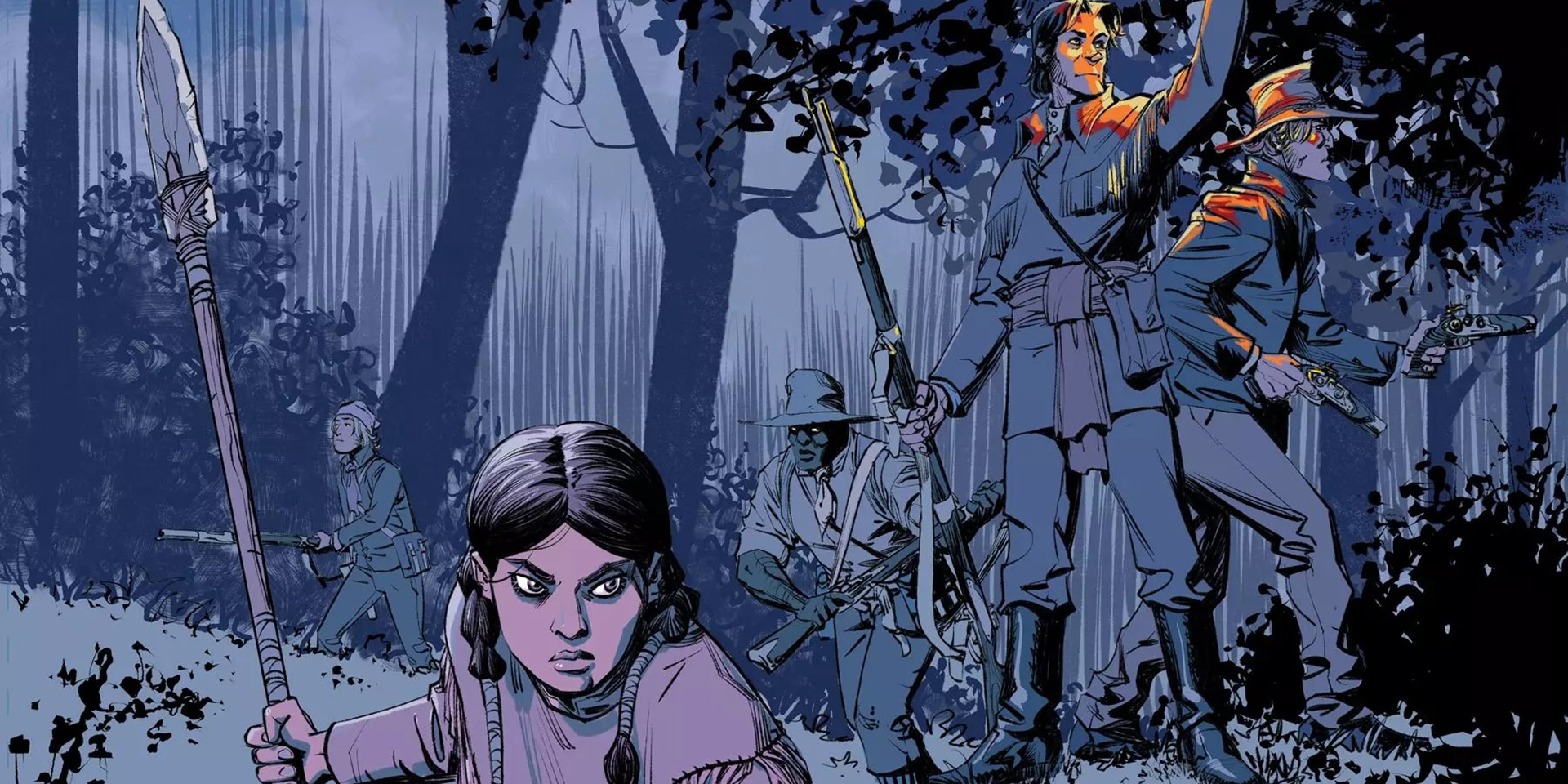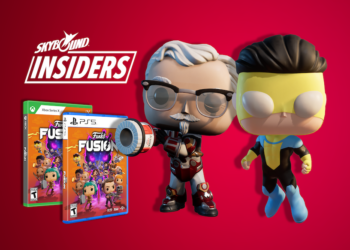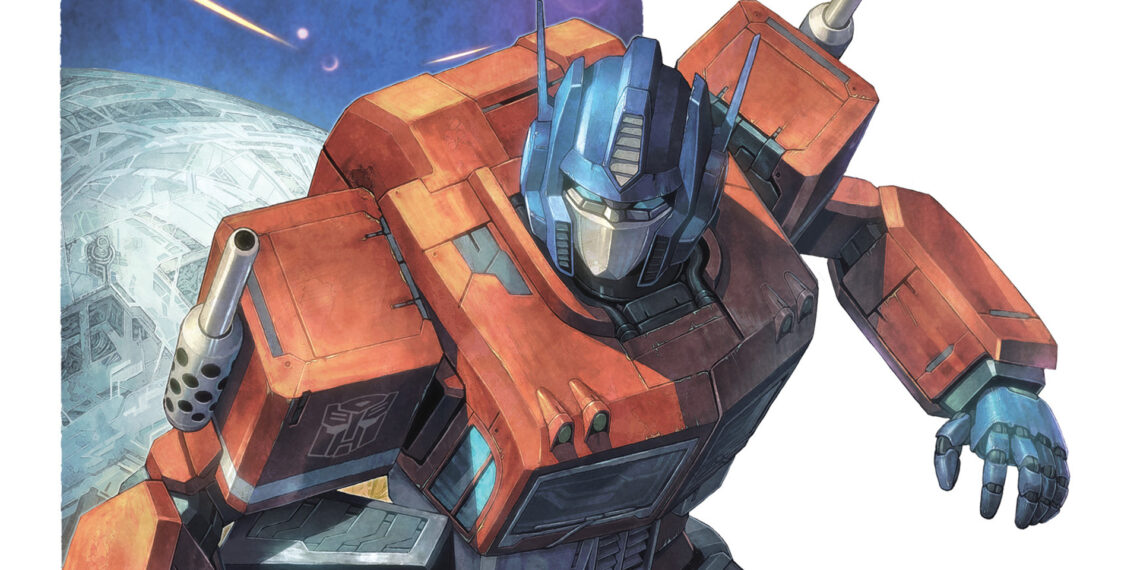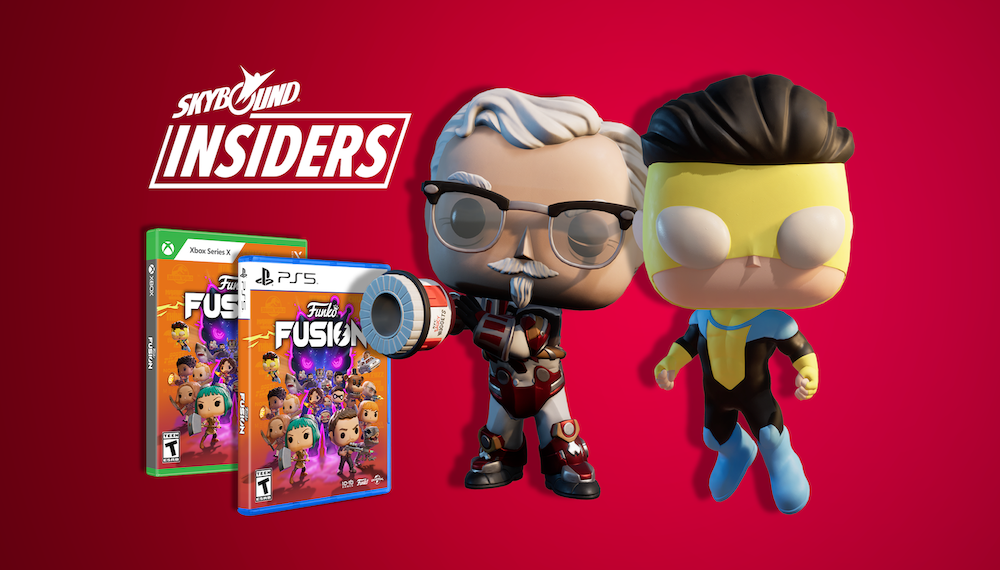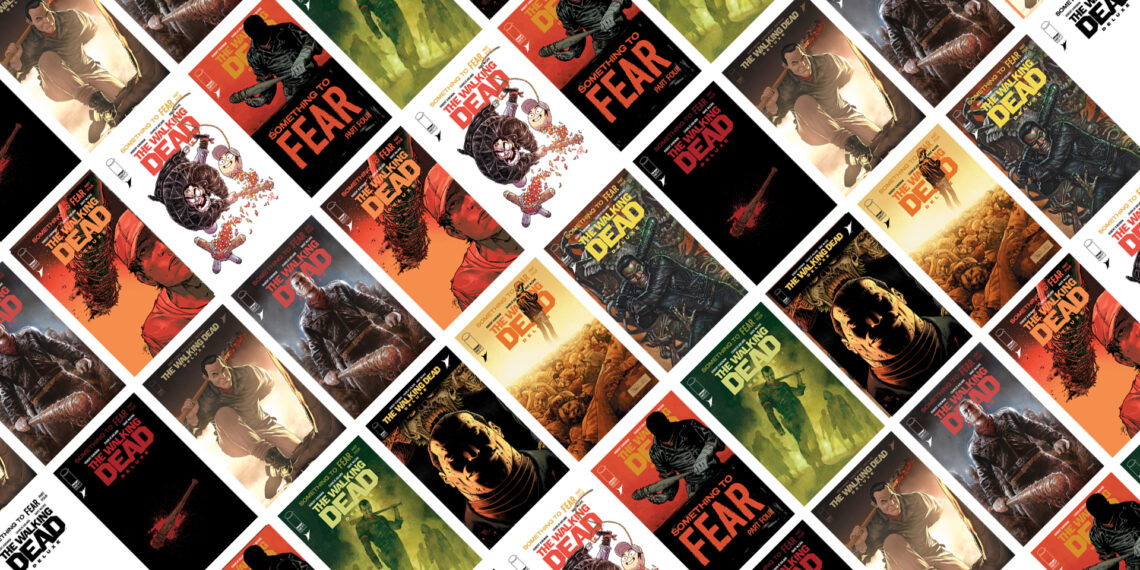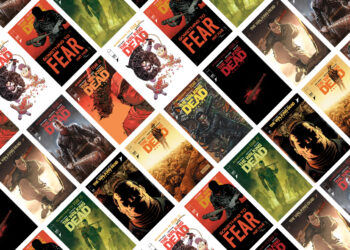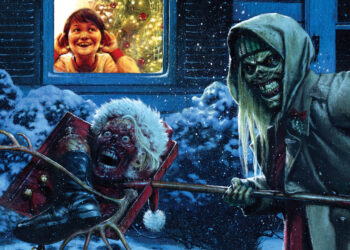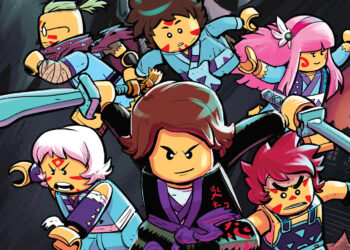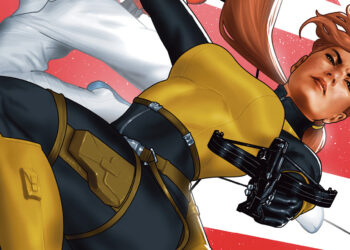This week marks the Kickstarter launch of Corps of Discovery, a tabletop cooperative game set in the world of writer Chris Dingess and artist Matthew Roberts’ hit Skybound comic Manifest Destiny. We recently sat down with the game’s designers, Sen-Foong Lim and Jay Cormier of Off the Page Games, for a behind-the-scenes look at the making of Corps of Discovery, what fans can expect from the Kickstarter, and how they’re treating the comic’s subject matter. (Spoiler Alert: Lewis and Clark are definitely not heroes.) Here’s what the two had to say…

On the game’s premise…
Lim: It’s a game of cryptic exploration. Exploring around the uncharted lands of America – at least by colonizers – and you are also fighting off monsters. But the main conceit is that the game uses logic and deduction unravel what the map contains. So as the Corps of Discovery crosses the Americas, they learn more and more about what types of terrain are next to other types of terrain and can use this logic to find the things they need to survive the harsh environment and to combat against the monsters.

Cormier: It’s been described as like Minesweeper or Sudoku, but thematic survival. I always think the best five-word summary of the theme of this game is “Lewis and Clark and monsters.” Gameplay wise, as Sen was saying, it’s a one to four player cooperative deduction game. We’re trying to deduce where resources are to survive challenges and fight the monsters.
On how the project began…
Cormier: We were actually working with another publisher who, during the pandemic, asked us to make a solo game. He wanted it to be about being trapped on a deserted island. I think, even on that very phone call, I said, “You know what would be cool? A scratch-off game, where you’re on an island and scratching areas off and you’re exploring.” We were all pretty excited by that. So we developed it into gameplay – very similar to what it is now in the Corps of Discoverygame. It sat there for quite a while and then the pandemic passed. (I hope we’re done with the pandemic.) Now Harrow County is my second game as a publisher. It’s out, and I’m now looking for my third game. I’m like, “I really liked that gameplay from that deserted island game.” I called that publisher and asked, “Are you doing anything with this?” He’s like, “Nah, I couldn’t get any traction in my company, so it’s not going anywhere.” I’m like, “Well, can I have a back?” He’s like, “Sure you can.”
So then came the funny challenge of “What the heck comic can we fit into this?” Because all of my company’s games are based off of comic books…
Sen’s got quite a reach with all sorts of different publishers in the comic and board game and Hollywood world. So I said “Hey, what are some comics that are about exploring, maybe being stranded on a deserted planet or island or anything like that?” We got a few and I started reading some, but Tricia [Victor], the Business Development Manager for Tabletop from Skybound, posted [an advertisement] for Manifest Destiny. So we both read it and we’re like, “Oh my gosh, this is an amazing comic book.” We immediately thought, “Yes, of course this fits… We’re exploring westward and now we have to fight monsters…” That wasn’t in our big stranded-on-a-desert-island game. And we didn’t want to make it a solo game. So we had to figure out how to make it a cooperative game because it is a cooperative kind of storyline. That’s what started it.

On how the game’s evolution…
Cormier: When we pitched it, Skybound was in almost immediately, because the concept was so cool. It transferred from a scratch-off game. Because we didn’t like the environmental impact of the scratch- off and how disposable it would be. That went away and we came up with a new system where you’re lifting tokens, and you slide a map in and you get different maps every time you play. The game comes with the “Fauna” and “Flora” chapters. If you’re familiar with Manifest Destiny, those are the first two chapters in the comic. It comes with four expansions that we’re launching at the same time on Kickstarter. If you’re familiar with the comic, then you’ll know what these words mean: Insecta, Vameter, Maldonado, and Fog. Those are all the chapters. They really play a lot differently, but they feel like those chapters. I’m really, really happy. I think that’s one of our strong points at Off the Page Games… Everyone who’s played one of our games so far – and we’ve only got two so far – but they really have commented about how, if you know the IP, if you know the comic, the game’s even better. Because it feels like the comic, everything makes sense, the context really helps. But if you’ve never heard of the comic, the games are still great on their own.
Lim: And you kind of want to go read the comic. [Laughs.]
On how Lim and Cormier collaborate…
Lim: We live 3000 kilometers away from each other. Jay’s in Vancouver, I’m near Toronto, an hour and a half south of Toronto. So there’s a time difference and the physical difference. Jay is also the publisher. I just do the design work with Jay. So Jay is involved in lots more stuff, like the day-to-day payment of things, and how thick the cardstock should be. All that kind of stuff. I’m interested in it, but it’s Jay’s job, so he’s the one that takes care of that. So, generally speaking, we do the design together, and then Jay takes it and we’ll playtest it. We’ll come back and we’ll meet together and we’ll discuss what works and what doesn’t.
It always comes down to the finickyness of the balance, to make for the best gameplay experience. Does the game work? Of course it works. But we want it to work best. We want to best represent the brand. That’s the reason why Jay and I wanted to work in comics, in general. Off the Page Games, as Jay said, is very much a comic book-related imprint, just like Skybound is a comic book line. So Jay came up with the idea of “Why don’t we just do independent comic books? Is there a market for games for independent comic books?” I think there is because that’s a chronically underserviced demographic. They get their comic book, and that’s it. They don’t oftentimes get the big movie or the figures or anything like that.
Jay and I are big, big comic fans, more so of the independent lines, more so of the independent creators. That’s really what we wanted to do – work with the creatives who created this thing that gave us joy, the comic book, and make them a game that is worthy of the world that they’ve created and the story that they’ve created. We’ve worked with Matt [Roberts] and Chris [Dingess] a little bit on this one, and on future ones we’ll be working, hopefully, with other great writers and artists to create true brand extensions. Games that actually expand the world or let the creator show parts of the world that maybe didn’t exist in the comic pages, but between the pages or between issues or things like that. What we’re hoping to do is really make the worlds come alive. So yeah, we really do love comic books. [Laughs.]
On the game’s elements…
Cormier: Some questions a lot of people ask are “Will you be able to understand the map?” and “How do you replay the game?” Once you see a visual of how this works… There’s a little contraption, a cardboard contraption – or you can get the wooden one if you get the deluxe version of the game – you slide a map in it, and a map hider that hides the data that’s on it. Then you put on it all these little tokens covering every one of the little holes. Then you slide up the map higher, and you’re set up to go. The game comes with eight maps for every chapter. The core game comes with 16 maps. People on Kickstarter are gonna get a bonus 10 maps just for backing it on Kickstarter. And in the future, you’re gonna be able to download more maps from our site. Because we made the maps 8½ x 11 inches, we’re trying to figure out a solution for Europe. But currently it’s 8½ x 11 for the map. So that’s basically unlimited replayability, let alone the expansions also have eight maps.
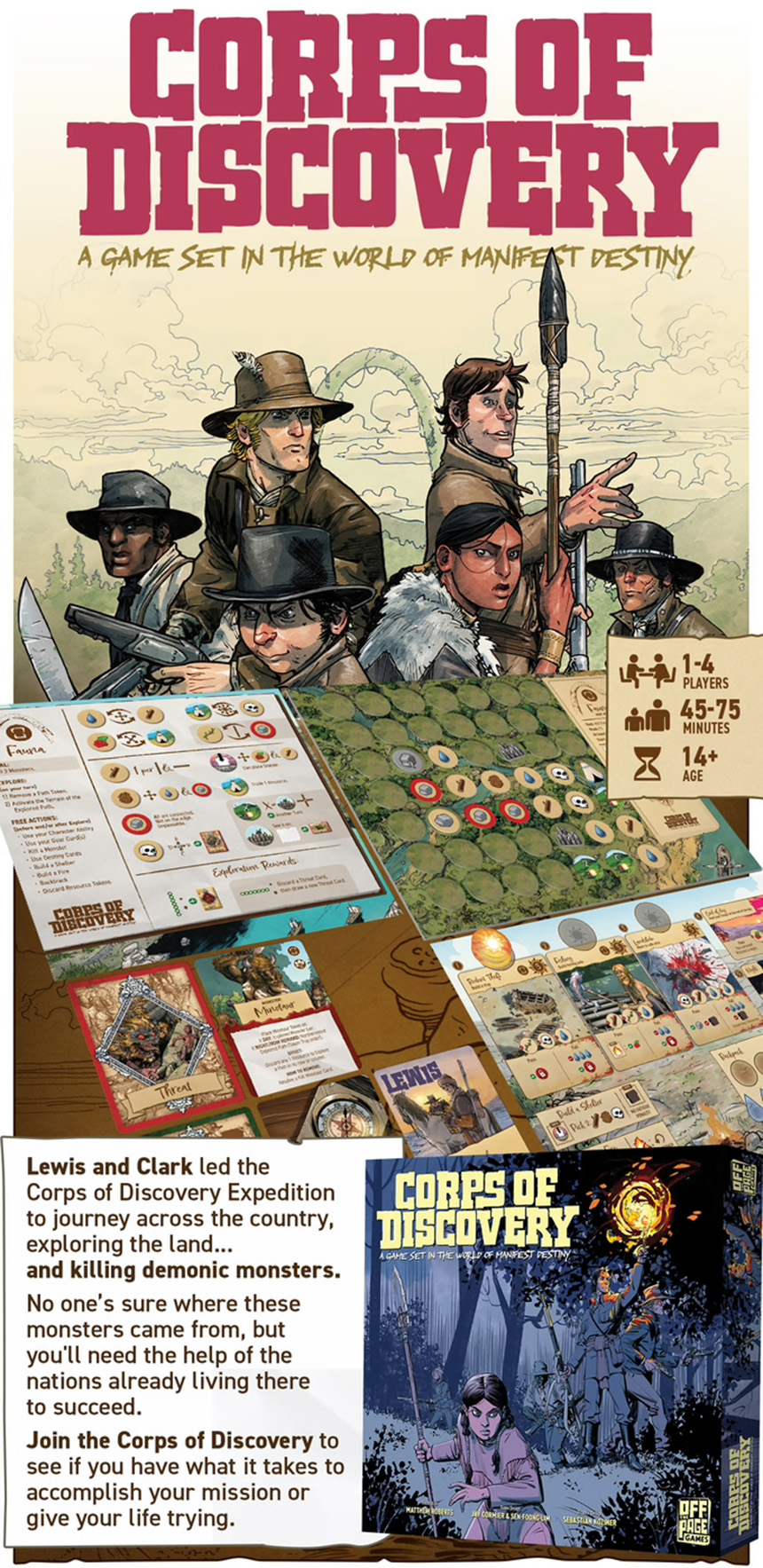
On their sensitivity towards the game’s subject matter…
Cormier: I know some people still post about being upset that this even exists, that we’re trying to show that Lewis and Clark are heroes. But the comic goes above and beyond to show that they’re not really heroes. So we defer to the comic it’s based on. They do a great job of really subverting the concept of the term “Manifest Destiny,” and hope to guide people that way. We have partnered with a team of cultural consultants, and they’ve helped navigate some things. They think it’s fine going forward because it’s a great opportunity for discussion. It’s not something we should hide behind or be ashamed of going forward. They’ve said, “Let’s talk about it, because it did happen, and it still is impacting a lot of lives today with things like pipelines.” In issue 25, Chris Dingess wrote a letter in the back about his perspective, being a white male American, about him and Matthew making this comic. They know they probably got some things wrong, but they’re really trying to avoid stereotypes and really trying to be careful with all that kind of stuff. That to me was one of the main reasons why I caught on to this IP, because their intentions were good.
For exclusive Skybound coverage and rewards, join Skybound Insiders now. Free to join!




